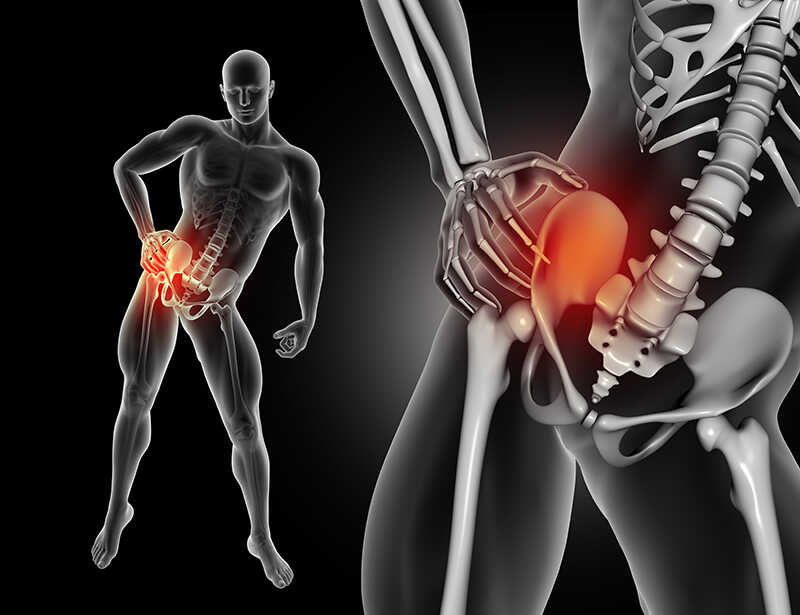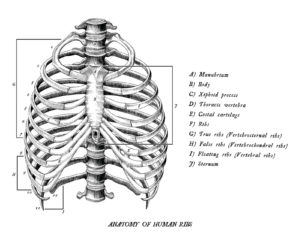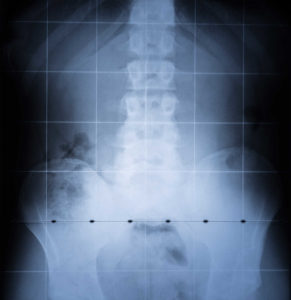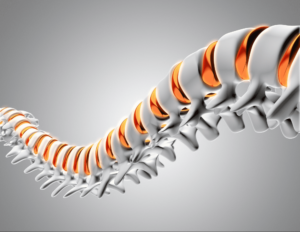What Are Hip Flexors?
Hip flexors are a muscle group that is located in the top part of your thigh and pelvic area. The hip flexor muscle group allows for flexion and mobility of the hip joint and also is responsible for bending your knees to your hips.
This group of muscles plays an important role in activities such as: football, soccer, dancing, mountain biking, and hiking. Hip flexion plays an important role in most outdoor activities, and pain caused by an injury or strain can easily put a damper on your favorite activity.
Hip Flexor Anatomy
The hip flexor muscle group is made up of the iliacus, psoas major (aka: iliopsoas), and rectus femoris which is a part of the quadriceps (quads). The rectus femoris plays an important role, as the quadriceps run from your hip joint to the knee joint, and are used heavily during any physical activity.
- Psoas major: This is a deep muscles that is responsible for connecting the leg to the spine. It runs from your lower back, through the pelvis, and passed through the front of the hip attaching to the femur (thigh bone).
- Sartorius: This is the longest muscle in the human body, responsible for helping flex the knee and leg, running from the pelvis to the knee.
- Illiacus: Another deep muscle, triangular shaped and flat, this attaches your pelvis to your femur and is responsible for rotating and flexing your thigh.
- Pectineus: Often referred to as the groin muscle, the pectineus is at the top of your inner thigh. Its main responsibility is hip flexion, but also rotates your thigh and pulls your legs together.
- Rectus femoris: Lastly, this muscle is part of the quadriceps, and attaches the pelivs to the patllar tendon in the knee.
Long Term Effects Of Tight Hip Flexors
Over time, muscle imbalances can occur as the result of hip flexor muscles being constantly shortened and lengthened. When this happens, anterior pelvic tilt, or lower cross syndrome can occur.
Lower cross syndrome can negatively effect posture throughout the body, as well as join dysfunction and joint pain.
Hip Flexor Tightness
Tight hip flexors are very common today especially with patients who have a desk job or they are more sedentary and are sitting. This is because your hips are always flexed, and over time your hip flexor group which is made up of your iliopasoas muscles will get contracted and tightened and this anterior pelvic tilt that these tight flexors create can be a source of low back pain, low back tension and it alters the mechanics of your spine.
Loosen Up Your Hip Flexors
Today we are going to review the hip flexor stretch which is similar to a of runner’s lunge in yoga, the overall goal is to lengthen your hip flexor group and the easiest way to do it is on your knee.
Step #1
First, you will need to find something soft to put on the floor under you for increased comfort. While you are doing the stretch you want to make sure your trunk and spine are upright, and your core is contracted – so make sure to tighten your core muscles.

Step #2
The motion is a lean / lunge forward and you are going to go until you feel tension on the front side of your trailing hip. Focus on keeping your core muscles tight throughout the stretch, so you do not incorrectly arch your spine.
Modified Hip Flexor Stretch
We can use different modifications if you have bad knees or for some reason you are not feeling the stretch in the proper area.
If this is the case, I would recommend trying out the standing modification. For the standing modification you’re going to be in a split lunge position and your stretching the back leg. The same concepts apply as with the kneeling version, you want to keep your trunk in spine upright while you’re lengthening the hip flexor group and the easiest way to do this is kind of a by saying no you’re going to lean into the lunge.

Also, same as the kneeling version, you should feel that tension on the front side of your hip.
Increased Intensity Hip Flexor Stretch
If you would like to increase the intensity of the stretch while you’re kneeling or standing you can laterally flex your arm that is on the side of your rear leg over the top of your head, and kind of lead to the opposite side. This addition is going to add more tension and increase the intensity of the stretch but still be focusing on the hip flexor group.

What If Stretching Is Not Enough?
Often times, individuals will find that stretching along does not decrease their pain symptoms enough. At South Pointe Chiropractic we have successfully treated many patients with lower cross syndrome (tight hip flexors over a long period of time), using a combination of approaches.
Our approach often includes:
- Trigger point therapy and instrument assisted soft tissue mobilization to break away muscular adhesions, and myofascial release to to iliopsoas and surrounding muscles
- Exercises to help regain healthy lumbar flexion mobility
- A regimen of exercises designed to strengthen the core (abdominal muscles)
- Education about proper body posture and usage, which will help relieve hip flexor tightness for the long term
If you are experiencing pain from tight hip flexors, do not hesitate to give us a call at (720) 749-4712 to make an appointment. Our chiropractic teams goal is to reduce your pain and increase quality of life.




